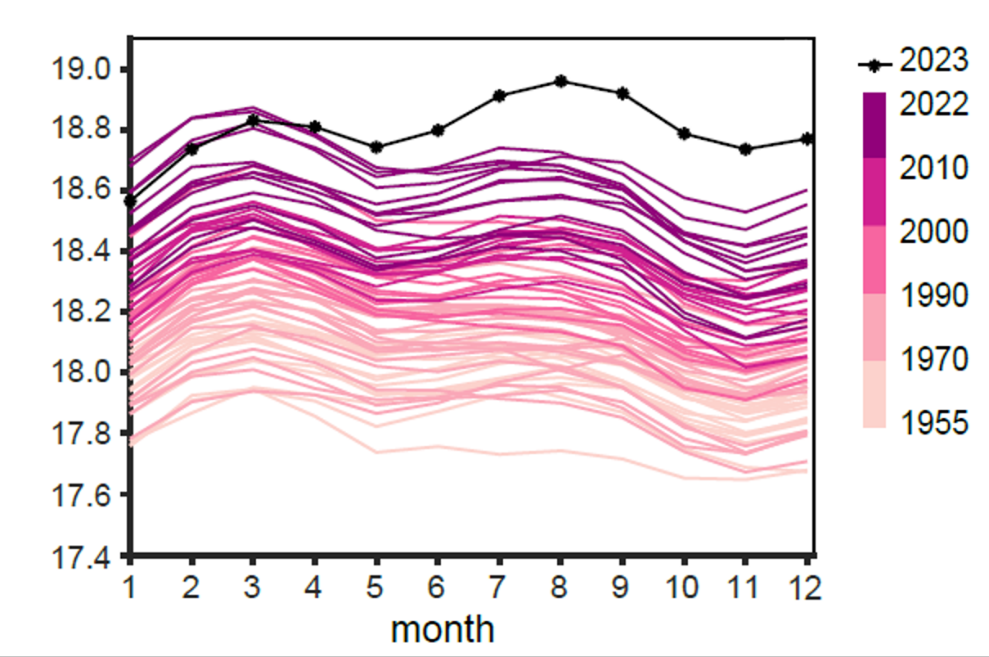
ESSIC/CISESS scientist Alexey Mishonov along with other scientists from the United States, China, New Zealand and Italy have a new article in the journal Advances in Atmospheric Science documenting the record highs in the global ocean set in 2023.
The global physical and biogeochemical environment has been substantially altered in response to increased atmospheric greenhouse gasses from human activities, the researchers say. In 2023, annual sea surface temperatures reached the hottest ever recorded by modern instruments. The annual average heat content in the upper 2,000 meters of the ocean also set records. The Tropical Atlantic Ocean, the Mediterranean Sea, and Southern Ocean all recorded their highest ocean heat content observed since the 1950s. This year also brought the highest annual density stratification in the ocean and record annual spatial inhomogeneity of ocean temperatures.
This warming was influenced by the development of a strong El Niño during 2023, which also caused anomalies in salinity patterns. The researchers found that sea surface temperatures in the second half of 2023 were more than 0.3°C warmer than 2022 values, which they characterized as “astounding”.
Mishonov is a researcher with extensive experience in various fields of oceanography, including ocean color, water transmissivity and particulate organic carbon study, oceanographic data management, analysis, and climate research.
To access the article, click here: “New Record Ocean Temperatures and Related Climate Indicators in 2023”.






